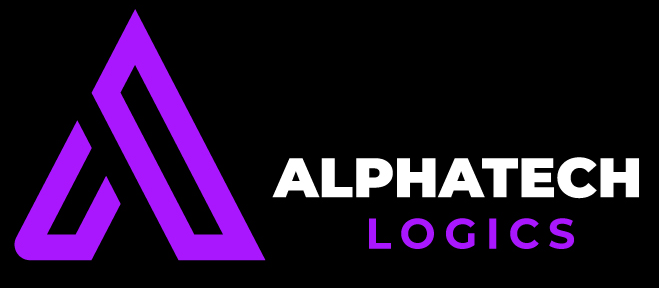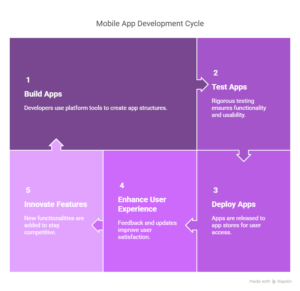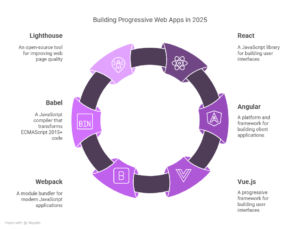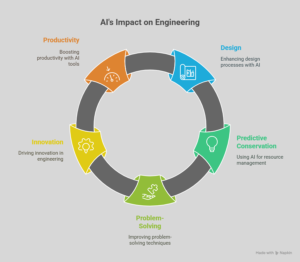Artificial intelligence( AI) is revolutionizing different sectors on our earth, and engineering just happens to be one of them. From designing to predictive conservation, AI is changing the manner in which engineers address problems, invention, and productivity. What follows is a discussion of the top operations of AI in engineering, factual operations of these, and practical guidance on how to apply AI in engineering processes.
Top AI operations in Engineering
Generative Design
Generative design applies machine knowledge algorithms to run millions of design cases against some given handed constraints and conditions. Parameters analogous to material, weight, and cost are entered by engineers into the system, and the AI produces optimized designs that are beyond mortal brain capabilities. It’s applied most considerably in aerospace, automotive, and architecture industriousness.
Predictive conservation
Artificial intelligence- predicated predictive conservation is dependent on machine knowledge( ML) that processes sensor data and predicts when outfit is likely to break down. This reduces time- eschewal, saves haves, and extends the continuance of the outfit. For illustration, AI can potentially check for climate, temperature, and other factors to describe anomalies before they lead to failures.
Structural Health Monitoring
AI can use sensor- integrated structures like structures, islets, and channels to describe their condition in real- time. This facilitates engineers relating implicit future issues before they do, with cost benefits and enhanced safety.
Automation and Robotics
AI- controlled robotics is more and more applied in manufacturing and construction for repetitive or dangerous tasks. analogous robots are suitable to learn and adapt to a new terrain, and this makes them precise and effective.
Energy Optimization
AI is used to optimize the operation of energy in power systems, industriousness, and structures. AI systems ensure that the energy destruction is reduced to a minimum and make structures, industriousness, and power systems sustainable by assaying trends and demand vaticinations.
Simulation and Testing
AI accelerates simulation cycles by predicting issues and relating implicit design excrescences. This reduces the operation of physical prototypes, saving haves and money.
force Chain Optimization
AI helps engineers manage complex force chains by predicting demand, optimizing force, and relating possible backups. This ensures on- time delivery of paraphernalia and cost savings.
Real- Life operations of AI in Engineering
General Electric( GE) Predictive conservation
GE uses AI to cover its artificial outfit and spurt machine performance. By covering readings from sensors, it can predict conservation conditions and help precious breakdowns.
Tesla Generative Design
Tesla uses generative design to produce robust yet feathery factors for its electric motorcars. This improves performance and reduces material charges.
Autodesk Design Tools AI- predicated
Autodesk’s generative design software, similar to Fusion 360, is an artificial intelligence- predicated software that helps engineers produce new designs. For illustration, Airbus used the tool to produce a partition for its planes that weighs 45 lower.
BP Energy Optimization
BP uses AI to maximize oil painting oil and gas birth. With geological data analysis, the company can determine where to drill and maximize effectiveness.
Skanska Construction Robotics
The Skanska construction establishment uses AI- powered robots to carry out tasks like concrete pouring and bricklaying. This improves perfection and reduces labor costs.
Espousing AI in Engineering Tips
Start Small
You need to launch birdman systems with the end of birdman testing AI results in targeted sectors, like predictive conservation or design optimization. This will enable you to pilot test the impact of the technology former to scaling.
Invest in Data structure
AI is data- driven quality. Make sure your association has robust data collection, storage, and recovering systems.
unite with AI Experts
unite with AI experts or outsource data scientists to apply AI in your engineering workflows. Their experience can help you from making misapprehensions and achieving the topmost ROI.
Train Your Team
Train workers, including engineers and other staff, to familiarize them with and work alongside AI technologies. This creates an invention culture and facilitates royal handover. Prioritize Use Cases with Clear ROI Direct the operations of AI towards concrete value, i.e., cost reduction, bettered effectiveness, or bettered safety. This makes the investment easily justifiable to the stakeholders. Encourage Ethical and Responsible Use of AI Resolve ethical issues like algorithmic bias by AI and data insulation in a manner that creates trust and nonsupervisory compliance. Make use of pall- predicated AI results. all platforms offer scalable and cost-effective AI results that are readily adoptable into current processes. This is especially useful for small and medium enterprises.
Conclusion
AI is revolutionizing the field of engineering with unrivaled eventuality for invention, effectiveness, and sustainability. Engineers are now suitable to work on intricate issues and yield better issues with the help of technologies like generative design, predictive conservation, and energy optimization. Real- world operation in companies like GE, Tesla, and Autodesk demonstrates the revolutionary eventuality of AI in engineering. To effectively use AI, the companies need to start small, invest in data structure, and concentrate on use cases that can be measured for ROI. With the right mindset, AI can be a swish friend in the pursuit of engineering excellence and erecting the future of the company.





